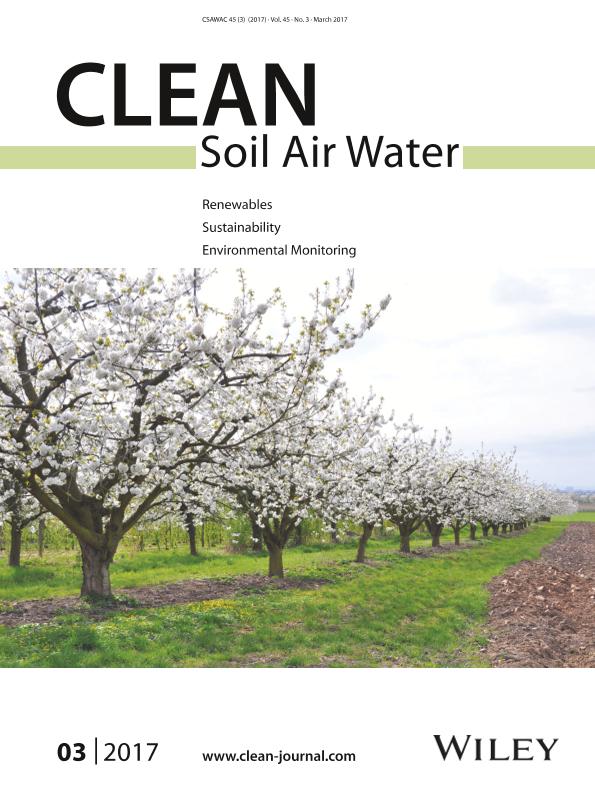Artículo
Agro-Industrial Effluent Phytoremediation with Lemna gibba and Hydrocotyle ranunculoides in Water Recirculating Mesocosms
Basílico, Gabriel Omar ; Magdaleno, Anahí
; Magdaleno, Anahí ; Paz, Marta Laura; Moretton, Juan Agustin; Faggi, Ana Maria
; Paz, Marta Laura; Moretton, Juan Agustin; Faggi, Ana Maria ; de Cabo, Laura Isabel
; de Cabo, Laura Isabel
 ; Magdaleno, Anahí
; Magdaleno, Anahí ; Paz, Marta Laura; Moretton, Juan Agustin; Faggi, Ana Maria
; Paz, Marta Laura; Moretton, Juan Agustin; Faggi, Ana Maria ; de Cabo, Laura Isabel
; de Cabo, Laura Isabel
Fecha de publicación:
03/2017
Editorial:
Wiley VCH Verlag
Revista:
Clean-soil Air Water
ISSN:
1863-0650
Idioma:
Inglés
Tipo de recurso:
Artículo publicado
Clasificación temática:
Resumen
Treatment of agro-industrial effluents can be carried out via phytoremediation with mono- or multi-specific macrophyte crops. A 6 day phytoremediation assay was performed in mesocosms with continuous recirculation of wastewater from a poultry industry with the macrophytes Lemna gibba and/or Hydrocotyle ranunculoides. The plant effects over removal of nutrients (N, P and C), fecal contamination indicators (total coliforms and Escherichia coli) and the genotoxicity of wastewater by the Allium cepa test were evaluated. A decrease by about 97.6% of total coliforms and E. coli, without significant differences between treatments was observed. The highest removal rates of ammonium (77.9%), dissolved inorganic nitrogen (77.9%), soluble reactive phosphorus (47.6%), total phosphorus (60.6%), and particulate organic carbon (82.1%) were observed in mesocosms with L. gibba + H. ranunculoides, although there were no significant differences (p > 0.05) with respect to the monospecific culture of L. gibba. Lower rates of nutrients removal were observed in monospecific cultures of H. ranunculoides. Moreover, the use of both species meant a reduction of the genotoxicity of wastewater, with no chromosomal aberrations and micronuclei in meristematic root cells of A. cepa. The obtained results confirm the benefits of the joint use of H. ranunculoides and L. gibba for phytoremediation of wastewater from the poultry industry, being preferable to the use of monospecific crops.
Palabras clave:
Allium Cepa Test
,
Genotoxicity
,
Macrophytes
,
Phytoremediation
,
Wastewater
Archivos asociados
Licencia
Identificadores
Colecciones
Articulos(MACNBR)
Articulos de MUSEO ARG.DE CS.NAT "BERNARDINO RIVADAVIA"
Articulos de MUSEO ARG.DE CS.NAT "BERNARDINO RIVADAVIA"
Citación
Basílico, Gabriel Omar; Magdaleno, Anahí; Paz, Marta Laura; Moretton, Juan Agustin; Faggi, Ana Maria; et al.; Agro-Industrial Effluent Phytoremediation with Lemna gibba and Hydrocotyle ranunculoides in Water Recirculating Mesocosms; Wiley VCH Verlag; Clean-soil Air Water; 45; 3; 3-2017; 1-7
Compartir
Altmétricas



